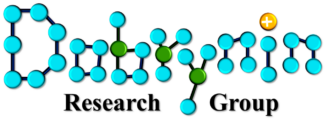Zilu Wang, Yuan Tian, Heyi Liang, Douglas H. Adamson, and Andrey V. Dobrynin
We use a combination of the coarse-grained molecular dynamics simulations and finite difference method calculations to study electromechanical coupling in composite polymer/graphene foams. In these foams, graphene sheets (G-sheets) cover the surface of the foam cells resulting in a percolating network of graphene sheets. Our simulations have shown that upon uniaxial deformation or under foam swelling conditions, the percolating network of the G-sheets breaks down. This breakdown is manifested as an increase of the foamʼs electrical resistance. The disruption of the graphene networks occurs through crack formation of the G-shells covering the surfaces of the polymeric foam cells. These cracks are responsible for the hysteresis in electromechanical foam properties observed during loading–unloading cycles. In particular, for uniaxial foam deformations, it requires the application of a compressive stress for the foam to retain its initial dimensions. Comparison between uniaxial and swelling foam deformations shows that there is a stronger variation in the foam resistance under uniaxial deformation conditions.

